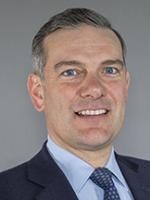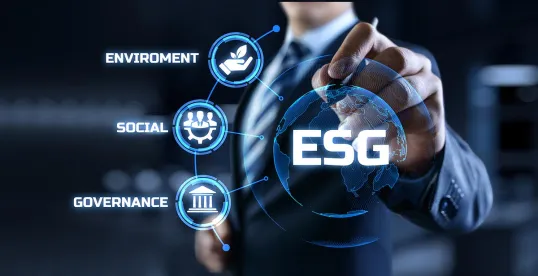Summary
In an important development, on April 28, 2022, the Securities and Exchange Commission (SEC) commenced an action in the United States District Court for the Eastern District of New York in which it asserted that Vale S.A., a publicly-traded Brazilian mining company and one of the world’s largest iron ore producers, knowingly made false and misleading claims about the safety of its dams in the years leading up to the January 2019 Brumadinho disaster.1 The SEC alleges that between 2016 and 2019 Vale manipulated safety audits, evaded local oversight and fraudulently misled investors in public filings regarding its adherence to international standards for dam safety.
As we have discussed previously in our ongoing series of articles on climate and social impact disclosure and governance issues,2 the SEC and other financial regulators in the U.S. have significantly ratcheted up their scrutiny of climate and social impact disclosure and related governance activities by regulated companies. The SEC, for instance, has enhanced its enforcement capabilities in this area with the formation of a Climate and ESG Task Force in March 2021. The Task Force uses sophisticated data analysis to mine and assess information across registrants, and to identify potential violations including material gaps or misstatements in issuers’ disclosure of climate risks under existing rules and disclosure and compliance issues relating to advisers’ and funds’ ESG strategies.3
The action against Vale, although relating to the extreme facts of the Brumadinho disaster, appears to indicate a clear direction of travel towards a more aggressive enforcement environment relating to ESG disclosures. There are, however, concrete steps that issuers can take now to mitigate the risk of an enforcement action or to ameliorate the consequences of a regulatory investigation should one be launched, including conducting an ESG audit, as discussed below. See also Jason Halper, et al., “What Public Companies Can Do Now to Prepare for the SEC’s New Proposed Rules on Climate Related Disclosure, April 7, 2022.
The Brumadinho Disaster
The Brumadinho dam disaster occurred on January 25, 2019, when Dam I, a tailings dam at the Córrego do Feijão iron ore mine, six miles east of Brumadinho, Minas Gerais, Brazil, suffered a catastrophic failure.
Tailings dams are structures that hold mining waste, which, for environmental reasons, must be properly stored. Dam I was built in 1976 using an “upstream design” whereby waste mining slurry was pumped into a storage pond behind a starter dike (i.e., a wall made of compacted mud). When the mining waste levels rose near the top of the dike, a new dike was added on top of the hardened mining waste to contain the tailings. Because the integrity of the dam relies on the stability of the hardened mining waste on which the dikes are built, upstream tailings dams are prone to destabilization caused by increased water content. For this reason, new upstream tailings dams now have been banned in Brazil. At the time of the disaster, Dam I was inactive and Vale has asserted that it was already in the process of decommissioning such structures. According to Vale’s statements, Dam I had a Stability Condition Declarations issued by the German-headquartered company TÜV SÜD in June and September 2018, supposedly attesting to the structural integrity of the facility.
The cause of the failure was “liquefaction,” where “saturated dam waste deposits spontaneously lose strength and stiffness, fundamentally compromising a dam’s stability and dramatically increases the probability of collapse.” The resulting flood of toxic mud killed 270 people and caused devastating environmental damage to the region. The SEC also alleged that Vale “was well aware” of the potential for damage due to liquefaction in light of a similar mining disaster, killing 19 people, in Mariana, Minas Gerais, just over three years earlier in November 2015 at a facility co-owned by Vale.
In the immediate aftermath of the disaster, Vale’s ADS lost more than $4 billion, or 25% of their value. On February 4, 2021, Vale agreed to a $7 billion settlement with Brazilian authorities.4 In November 2021, the Brazilian federal public prosecutor confirmed indictments against 19 individuals.5 The state authorities of Minas Gerais also have brought criminal actions against 16 individuals including senior executives of Vale and employees of TÜV SÜD.6
SEC Complaint
The SEC’s federal court Complaint alleges that, from 2016 onwards, Vale manipulated dam safety audits; obtained numerous fraudulent stability certificates; and misled local governments, communities, and investors about the safety of Dam I in Brumadinho through its ESG disclosures.7 Specifically, according to the Complaint, “over a period of more than two years, from February 2016 through October 2018, Vale knowingly or recklessly obtained eight fraudulent and deceptive stability declarations in connection with corrupted audits of the Brumadinho dam.”8 The Complaint further alleges that when Vale “obtained these stability declarations, Vale knew they were based on unreliable and flawed laboratory data or a flagrant disregard for minimum standards of safety that Vale purported to follow. Vale knew that assessments of the Brumadinho dam, based on best engineering practices, had revealed that the dam did not even meet Vale’s own safety standards much less international standards for dam safety.”9 The Complaint goes on to plead that Vale “obtained these fraudulent stability declarations through a pattern of deceptive acts. For example, Vale removed auditors when they refused to bend to Vale’s will and utilized ‘blackmail’ to coerce other auditors to comply with Vale’s demands.”10
The SEC avers that, despite Vale being aware that the Brumadinho dam did not meet international safety standards and the conduct described above, the company continued to fraudulently assure investors that the company adhered to the “strictest international practices” and “rigorously complied” with applicable regulatory requirements in its public Sustainability Reports and other public filings.11 In these reports, Vale (allegedly falsely) claimed, among other things, that 100% of its dams were certified to be in stable condition.12 Vale also made a “renewed public commitment to dam safety following the Mariana dam disaster. It vowed ‘Mariana Never Again’ and publically declared its ‘commitment to sustainability’ and achieving ‘zero harm’ to employees and surrounding communities.”13 In its Complaint, the SEC highlighted that Vale raised nearly $1 billion on U.S. debt markets during this period.14
Based on these alleged false and misleading statements, the SEC asserts that Vale violated Sections 10(b) and 13(a) of the Securities Exchange Act of 1934 and Section 17(a) of the Securities Act of 1933.15 The SEC seeks injunctive relief, disgorgement plus prejudgment interest, and civil penalties.16
Commenting on the charges, Gurbir Grewal, Director of the SEC’s Division of Enforcement, stated that “[b]y allegedly manipulating those disclosures, Vale compounded the social and environmental harm caused by the Brumadinho dam’s tragic collapse and undermined investors’ ability to evaluate the risks posed by Vale’s securities.”17
In a statement, Vale denied the SEC’s allegations and stated that it will vigorously defend the case, and that “[t]he company reiterates the commitment it made right after the rupture of the dam and which has guided it since then, to the remediation and compensation of the damages caused by the event.”18
Investor and Regulatory Pressure Has Been Mounting for Greater Climate Change and Social Impact Disclosure and Governance Enhancements
The asset management industry has been at the forefront of calls for greater ESG-related disclosure from issuers. An alphabet soup of investor-led coalitions demands adherence to various climate and social disclosure frameworks, with a consensus building for adoption of the Financial Stability Board’s Task Force on Climate-Related Financial Disclosure in the climate change area. The SEC’s recently proposed rule on climate change disclosure relies significantly on this framework, and many of the largest institutional asset managers, including BlackRock and Vanguard, likewise have called for disclosure along those lines.19 That the asset management industry would be leading this charge is hardly surprising given investment professionals’ need to justify claims that investment products or the companies in which they invest are sustainable, coupled with their need to rely on information from issuers to make those claims.
Likewise, in addition to the SEC, the Federal Reserve Board of Governors,20 the Financial Stability Oversight Council,21 the Commodity Futures Trading Commission22 and other financial regulators23 have weighed in with various guidance on climate change and social impact disclosure.
In the face of this substantial regulatory and investor scrutiny, issuers should consider being proactive in addressing their disclosure and governance (including assessment of risks and opportunities associated with climate change transition) relating to ESG matters. Tangible steps to consider include reviewing existing or contemplated public disclosures in light of known information and risks and after considering recent regulatory guidance; reviewing or implementing policies relating to the board’s consideration of ESG-related risks and opportunities; engaging climate and/or social impact experts, both as directors and officers and by retaining outside consultants as appropriate; and communicating regularly with significant investors and regulators to hear and potentially address their concerns or areas of focus before a problem arises.
Elizabeth Moore also contributed to this article.
FOOTNOTES
1 Press Release, SEC, SEC Charges Brazilian Mining Company with Misleading Investors about Safety Prior to Deadly Dam Collapse (Apr. 28, 2022), https://www.sec.gov/news/press-release/2022-72.
2 See Investors and Regulators Turning up the Heat on Climate-Change Disclosures: Attempting to Make Sense of the State of Play in the US, EU, and UK; Caremark and “Mission-Critical” ESG Company Operations; Senate Banking Committee Considers the Nomination of Sarah Bloom Raskin for Vice Chair of Supervision at the Federal Reserve: How Her Confirmation May Affect Climate-Related Banking Regulations; “Sustainable” Companies Face Increased Pressure to Justify the Sustainability Label Amid Investor Challenges and Demands for Greater Risk Assessment and Disclosure; Is Sustainability En Vogue or the Newest Staple? What New York’s Proposed Fashion Sustainability and Social Accountability Act Could Mean for the Fashion and Other Industries; SEC Proposes Climate-Related Changes to Regulation S-K and Regulation S-X.
3 SEC, Spotlight on Enforcement Task Force Focused on Climate and ESG Issues, https://www.sec.gov/spotlight/enforcement-task-force-focused-climate-esg-issues.
4 Press Release, Vale, Vale informs on the Global Settlement for Brumadinho (Feb. 4, 2021), http://www.vale.com/EN/investors/information-market/Press-Releases/ReleaseDocuments/20210204%20-%20Acordo%20Global_FR_i.pdf.
5 Léo Rodrigues, Processo criminal da tragédia em Brumadinho pode voltar à estaca zero, Agencia Brasil (Jan. 25, 2022), https://agenciabrasil.ebc.com.br/geral/noticia/2022-01/processo-criminal-da-tragedia-em-brumadinho-pode-voltar-estaca-zero.
6 Luciana Magalhaes and Samantha Pearson, Brazil Prosecutors Charge Ex-Vale CEO Fabio Schvartsman With Homicide for Dam Collapse, WSJ (Jan. 21, 2020), https://www.wsj.com/articles/brazil-prosecutors-file-charges-against-vale-tuv-sud-for-deadly-dam-collapse-11579622098?mod=article_inline.
7 Complaint & Demand for Jury Trial, Securities and Exchange Commission v. Vale S.A., No. 22-cv-2405 (E.D.N.Y. Apr. 28, 2022).
8 Id. at ¶ 13.
9 Id. at ¶ 14.
10 Id. at ¶ 15.
11 Id. at ¶ 237.
12 Id.
13 Id. at ¶ 9.
14 Id. at ¶ 273.
15 Id. at ¶ 277-285.
16 Id. at Prayer for Relief.
17 Press Release, SEC, SEC Charges Brazilian Mining Company with Misleading Investors About Safety Prior to Deadly Dam Collapse (Apr. 28, 2022), https://www.sec.gov/news/press-release/2022-72.
18 Alice Johnson, SEC Charges Vale Cver Brazil Dam Collapse, GIR (Apr. 28, 2022), https://globalinvestigationsreview.com/article/sec-charges-vale-over-brazil-dam-collapse.
19 See Jason Halper, et al., “Climate Risk Is Investment Risk: The Asset Management Industry Confronts The Challenges and Opportunities Presented By Climate Change Transition,” February 2, 2022, https://www.cadwalader.com/resources/clients-friends-memos/climate-risk-is-investment-risk--the-asset-management-industry-confronts-the-challenges-and-opportunities-presented-by-climate-change-transition.
20 Celso Brunetti, et al., Federal Reserve, Climate Change and Financial Stability (Mar. 9, 2021), https://www.federalreserve.gov/econres/notes/feds-notes/climate-change-and-financial-stability-20210319.htm.
21 Press Release, U.S. Dept. of the Treasury, Financial Stability Oversight Council Identifies Climate Change as an Emerging and Increasing Threat to Financial Stability (October 21, 2021), https://home.treasury.gov/news/press-releases/jy0426.
22 CFTC, Managing Climate Risk In the U.S. Financial System (Sept. 2020), https://www.cftc.gov/sites/default/files/2020-09/9-9-20%20Report%20of%20the%20Subcommittee%20on%20Climate-Related%20Market%20Risk%20-%20Managing%20Climate%20Risk%20in%20the%20U.S.%20Financial%20System%20for%20posting.pdf.
23 See, e.g., Press Release, Acting Chairman Martin J. Gruenberg, Acting Chairman Martin J. Gruenberg Announces FDIC Priorities for 2022 (Feb. 7, 2022), https://www.fdic.gov/news/press-releases/2022/pr22015.html.







 />i
/>i

